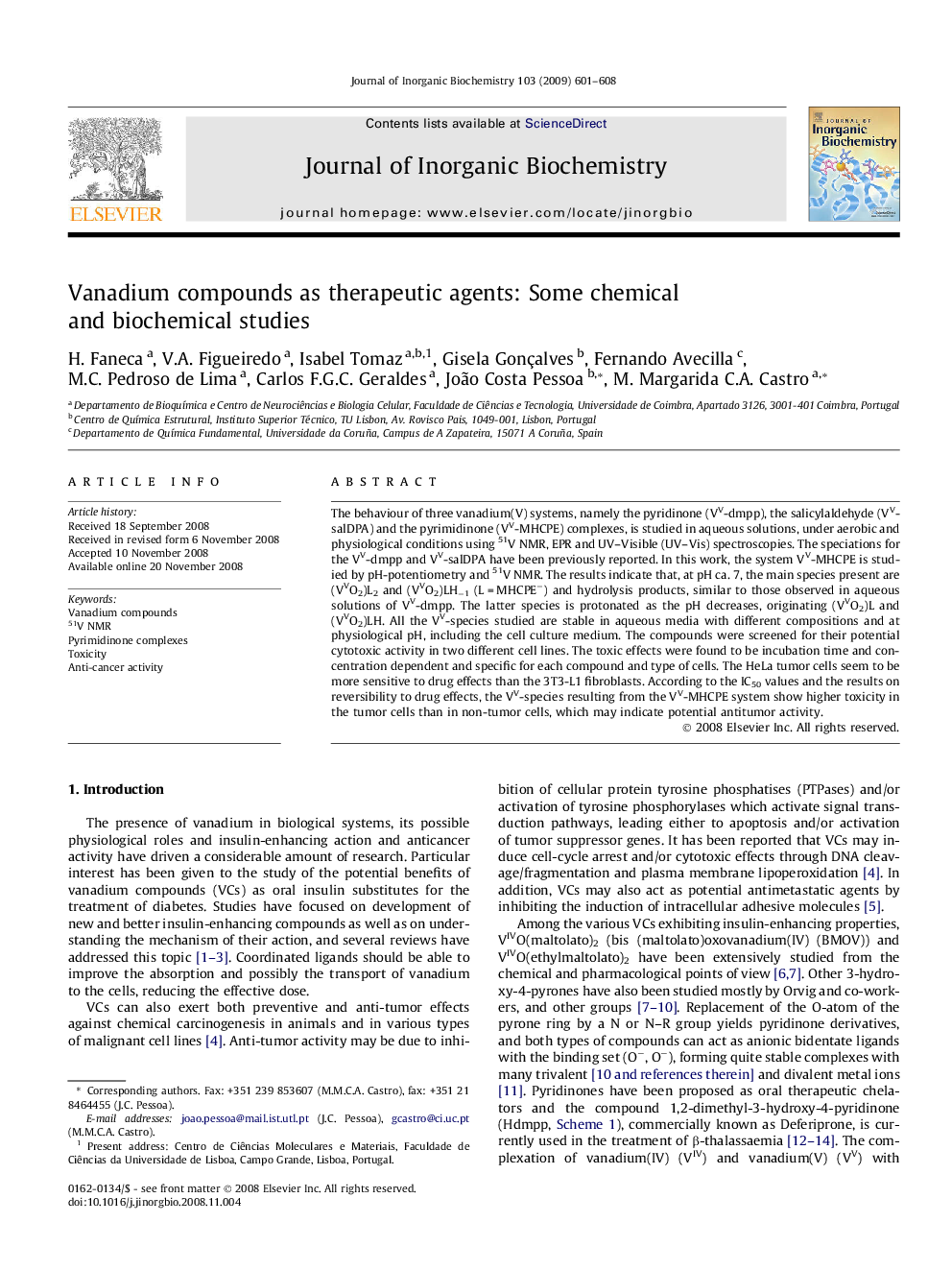| Article ID | Journal | Published Year | Pages | File Type |
|---|---|---|---|---|
| 1317430 | Journal of Inorganic Biochemistry | 2009 | 8 Pages |
The behaviour of three vanadium(V) systems, namely the pyridinone (VV-dmpp), the salicylaldehyde (VV-salDPA) and the pyrimidinone (VV-MHCPE) complexes, is studied in aqueous solutions, under aerobic and physiological conditions using 51V NMR, EPR and UV–Visible (UV–Vis) spectroscopies. The speciations for the VV-dmpp and VV-salDPA have been previously reported. In this work, the system VV-MHCPE is studied by pH-potentiometry and 51V NMR. The results indicate that, at pH ca. 7, the main species present are (VVO2)L2 and (VVO2)LH−1 (L = MHCPE−) and hydrolysis products, similar to those observed in aqueous solutions of VV-dmpp. The latter species is protonated as the pH decreases, originating (VVO2)L and (VVO2)LH. All the VV-species studied are stable in aqueous media with different compositions and at physiological pH, including the cell culture medium. The compounds were screened for their potential cytotoxic activity in two different cell lines. The toxic effects were found to be incubation time and concentration dependent and specific for each compound and type of cells. The HeLa tumor cells seem to be more sensitive to drug effects than the 3T3-L1 fibroblasts. According to the IC50 values and the results on reversibility to drug effects, the VV-species resulting from the VV-MHCPE system show higher toxicity in the tumor cells than in non-tumor cells, which may indicate potential antitumor activity.
